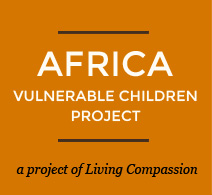We must start out today with an apology for our lack of focus on photography. The forward momentum in the actual work of the projects is sometimes so great that it eclipses our awareness to stop what we are doing and document! Today was one such day.
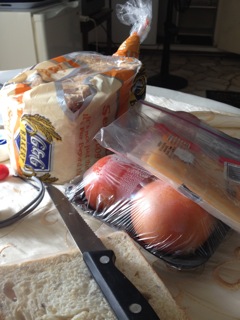
Preparing lunch to take to a full day out at Living Compassion.
Once in Kantolomba we picked up the conversation with the English teachers where we left off yesterday—time to get in there and resolve the question of the attendance requirement for participation in the field trips.
We started out talking about wanting to set the bar high, giving students a strong motivation to fully participate, while not making it out of reach, unreasonable. Veronica picked right up on the concept and gave an analogy from the accounting classes she is taking.
Allow us to pause here and mark this significant moment. For regular blog readers, with good memories for detail, please forgive what is likely repetition from past blogs, but we trust you are with us—recalling inspiring stories never gets old (think R/L!). Veronica is in her mid-forties. She has 5 children. When we met her, 8 years ago, she had not completed grade 9. In that time she has finished her education through grade 12 and is now enrolled in accounting school. Where to even start on what she had to overcome to achieve this? When she started that process she had 4 young children, all of whom she is supporting through school. During that time she had a baby and her teenaged daughter had a baby. She is at the Living Compassion site all day and goes to school at night. The secondary school she attended to finish grade 12 is a 40-minute walk from her house. The accounting school is a 30-minute walk to a bus and at least that on the bus to get there. Her house has no electricity. Do we even need to say this: She is a hero! Truly an inspiration to all of us.
So, she picks right up on the concept where most of the other folks were not, very possibly because we were presenting it from a western perspective. So up she got to the chalkboard to walk her peers through the economics principle. They got it right away! It was a wonderful moment to observe peer to peer teaching and learning.

Veronica using economics to explain the bar theory.
Once the entire team understood, it was on to the percentage. Where would the bar be set? Various opinions came in, ranging from 50% to 90%. There was a very robust discussion about what was reasonable. Then, Beatrice who had been quiet during the debate, slowly raised her hand, “I think it needs to be 100%.” She explained children should be going to school from Monday to Friday. If they are not, the child should give a proper reason. She said if she ever finds one of her own children at home during school hours, she is adamant they explain.
The team pondered this for a bit, and it was exciting to watch the consensus build. People began to agree that this is an extraordinary opportunity we are offering; it should be for students who truly want it. And if you truly want it, why would you not come to school every day that you are not sick? In fact, some offered that once the field trip program was explained, they expected many students could, and would, achieve 100% attendance. And so it is, not counting excused absences for illness (which, sadly due to no one’s “fault” will be many for every child in a given year), children must come to the Living English program every weekday in order to be eligible to attend the field trips.
Then we discussed how to track this, using Cheri (or Mama Cheri as the team calls her here) as inspiration, we decided to use stickers to mark each day of attendance. Who doesn’t love stickers?! And to have the students get to SEE their progress and have a tangible way to experience what 100% really means. For just about every child in the program this will be their first experience of very clear expectations, being required to follow through with them, and to encounter consequences. It is truly a toss-up which is the more valuable outcome of the program—English or this skill of learning to follow through with what one commits to. We have yet to iron out how to work with this with the very young children. We shall see.
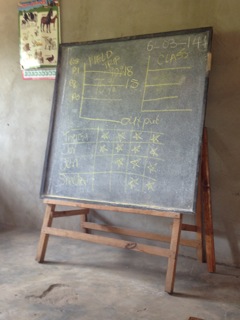
A sample of how the tracking the students’ attendance with stars could look.
We still had a bit of time before lunch. Some folks went off to finalize details for our trial field trip the next day. A selection of students and all the teachers are going to visit the clinic where Rose works. The main agreement everyone coming on the trip has made is English only. There will be NO Bemba during the outing! A big challenge we are eager to see is possible.
Other folks went to test technology integration with Joy’s first grade students. These are the students that were in her Genki program for pre-school, and are now attending government school. Using the iPad app for The Cat in the Hat book, each of the students got a turn to try it out. After less than 30 seconds of instruction, all of them jumped in and were using it like pros – seeing the words, pressing them to hear their sound, and repeating out loud. The thing that impressed the most was the focus. They were completely riveted, even in a room with plenty of potential distractions. One of the benefits technology could have in this setting is clear pronunciation. In the August blog we talked about the places many Zambians (not all, it depends on which of Zambia’s 72 main languages they grew up speaking) struggle with pronunciation of English words: dropping the H sound, mixing up the L and R sounds. So, when the children learn pronunciation from something like this Cat in the Hat app, they are getting a clear pronunciation of each sound and they pick it up so quickly!
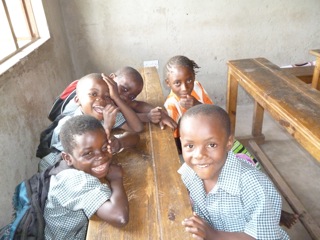
Some of Joy’s students.
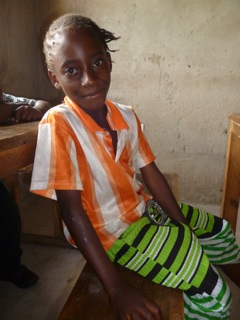
This is one of our current heroes, Emma.
Emma should be in grade one. The government recently drastically increased school fees. To enroll a child in grade 1 you must have 180 Kwacha in cash by the first day of school. That is about $35. Even in the U.S., $35 is not an insignificant amount of cash for a family struggling to meet basic needs. For a Zambian family it is an enormous sum. For a family in Kantolomba… well, it is a sum that almost no one can pull off. And this does not include paying for the mandatory school uniform and shoes. So, countless children like Emma stay at home. Emma brought herself to the Living Compassion property and asked to be part of Joy’s preschool class in the mornings. And she is joining Joy’s afternoon class where Joy works with the children who left her Genki class and entered government school. At age 7, Emma is sharp and motivated, against all odds!

Joy and Sreedevi show the students how to use the iPad.
Emma repeats a word after she hears it.

This little one is off and running!
As the day was winding down, we had a wonderful impromptu English conversation lesson. Georgina, who has a lovely natural curiosity, is always the one to pose questions of new folks to Zambia. After she asked Sreedevi a bit about Indian culture and religion, we had a great discussion on religion in general. At the end we remarked how every religion, at base, is really pointing at the same thing. Veronica smiled and said, “Yes, love. Every religion is about love.” Wow, the love just in that very statement! “Without love we would not have any of this. We have clean water here because of love.”
Just a few minutes later, as we went to get in the car we are using for this trip, we noticed the bumper sticker we had not seen before.

Let Love lead! The goosebumps in that moment were electric!
Before going back to the lodge we stopped in town to get stickers for the new attendance charts. Easy enough, right? Stickers do not exist in Ndola as far as we can tell. Stationers, major super markets, even a new toy shop—no one sells stickers. Such moments are poignant reminders of the abundance we live in. Get in your car and drive 20 minutes (and that is only if you are at the Monastery in Murphys; for most folks it is more like 5 minutes) and you can get just about anything you can name. Plan B to be determined.
Back at Castle Lodge we found Anna, who just arrived from the U.S. We met during dinner to bring her up to speed on the inspiring goings on thus far. Then, off to bed to rest for a busy day – the field trip to the clinic!
